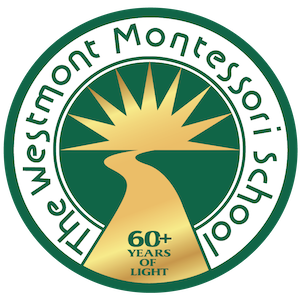
Hello and happy Monday! This past week I felt overwhelmed in the best possible way by the amount of creativity and imagination at Westmont. If you’ve ever been around children then you know that they simply radiate imagination. At Westmont this week several children invited me over to the train on the playground, explaining adamantly that they were heading to the zoo. When I asked which animals they were going to see, each child piped up one after the other without hesitation, “Penguins! Bobcats! Lions!” From there I headed to the sandbox where the children filled buckets with sand and told me simply that they were making huge cupcakes. Seeing the children’s unwavering confidence in their imagination both inspired me and made me pause. I consider myself a creative person, but I can’t remember the last time I just let my imagination run wild without considering what others might think or if I should edit my thoughts somehow. I imagine other adults have a similar thought process when it comes to creating something. Children, however, have a liberating certainty that comes with creating. This mentality, however, is particularly evident and encouraged at Westmont because of Montessori’s emphasis on the role of creativity in education.
This week the theme of Exploration Camp was “A Visit to the Met,” meaning that the campers spent the week learning about a different famous artist each day and made their own individual versions of one of their pieces. On Friday the children learned about abstract art, studying artist Wassily Kandinksy. As the teacher showed the children the first painting, she asked them how they felt when they saw it. Without hesitating, they responded, “Funny! Sad! Happy! Happy, I feel happy!” Regardless of the answer, the teacher encouraged them to speak up, giving them the opportunity to consider and share their feelings. As the teacher went on to explain the craft, which included each child recreating parts (that would come together to become a whole) of Kandinsky’s “Squares with Concentric Circles,” one child asked, “Is it okay if we get glue on our hands?” The teacher paused and shifted the conversation back to the children, asking, “Well, what do you all think? Do you think Van Gogh got paint on his hands when he painted? Or Monet, Cassat, or Seurat?” The children’s capabilities were placed alongside those famous painters without question, something unique to Montessori’s approach. I saw recognition pass over the child’s face—she was just as capable and creative as the artists she’d learned about. All the children said, “Yes!” Westmont’s emphasis on empowering children and the role of creativity seemed stunningly clear to me. Westmont recognizes children’s natural abundance of creativity and uses it to empower children to both respect their own abilities and their own creativity. Creativity is often viewed as an aimless colorful quality in the adult world—one that needs to be stifled. After spending time with the children this week, I’m reminded that creativity is actually a liberating force and a gateway to independence.




